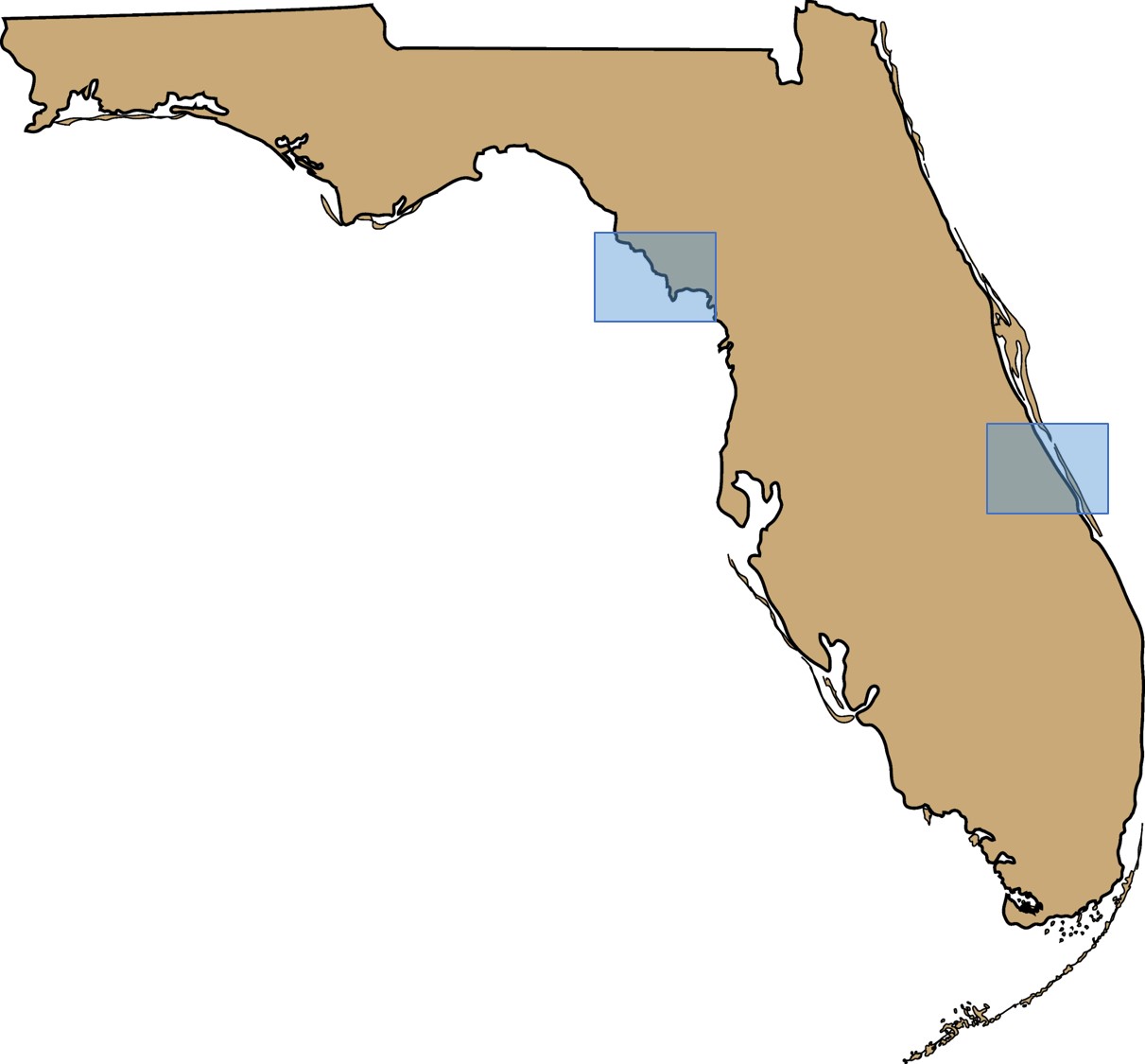Information on potential food sources for clams have been collected in many of Florida’s coastal environments. Measures of phytoplankton quantity and quality from two important clam aquaculture regions are presented in this guide.
Indian River Lagoon – Florida’s east coast
The University of Florida (Ed Phlips, P.I.) has been studying the Sebastian Inlet region of the Indian River Lagoon since 1997 with funding from St. Johns River Water Management District and the US Environmental Protection Agency. Chlorophyll a, phytoplankton biomass in the form of biovolume, and species data were collected monthly from the Sebastian area.
Suwannee Sound – Florida’s west coast
On the Gulf of Mexico coast, clam aquaculture leases are abundant throughout the Suwannee Sound and Cedar Key area. Phytoplankton studies by the University of Florida (Ed Phlips, P.I.) were conducted from 1997 to 2003 with funding from the Suwannee River Water Management District and the US Department of Agriculture. Chlorophyll a, phytoplankton biomass in the form of biovolume, and species data collected from multiple sites during 2002 and 2003 are presented in this guide. Clam leases from north to south include: Horseshoe Beach (HB), Pine Island (PI), Derricks (DE), Pelican Reef (PR), and Gulf Jackson (GJ).


